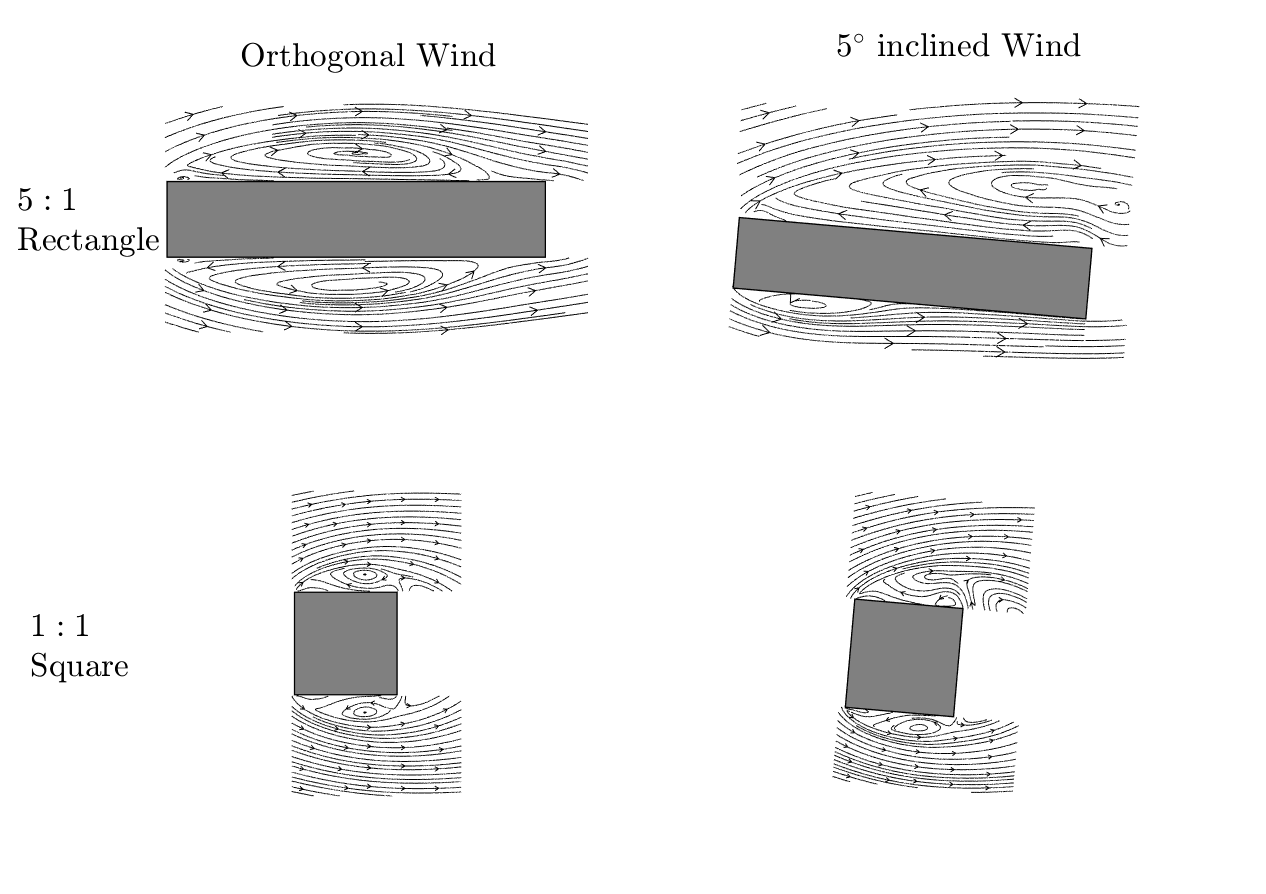This project is acutely focused on the fundamental fluid physics governing the unsteady loads experienced by non-streamlined objects. Bluff bodies, as they are commonly known, experience abrupt separation of the flow which subjects them to the consequences of flows which may be unsteady and in many cases, transitioning from laminar towards turbulence. Examples of bluff bodies include tall buildings, bridge decks, and slung-load containers. One archetype geometry which has proven itself to be a benchmark for other studies is the rectangular prism. This work makes extensive use of the rectangular geometry, which is defined by its aspect ratio (L/h) along with more traditional aerodynamic parameters such as angle of attack, and Reynolds number, Re. The effort to understand and predict these loads is pursued primarily through experimental testing and analysis as well as a supplementary effort to apply linear stability methods where applicable.
Animation showing instantaneous vorticity distributions near the leading edge corner of a rectangular section. As the Reynolds number increases, the distance it takes for a Kelvin-Helmholtz vortex to form decreases. Additionally, the size of the vortex is
The model used for this project is a 2D rectangular prism made up of 5 modules. The model can be configured to be tested in various ratios of L/h from 1 to 5, allowing a variety of different flowfields to be studied.

Velocity Streamlines representing a range of mean flow topologies around the model. The recirculation bubble is marked by the arrow directions and is bound by a shear layer dividing the reversed-flow region from the region of free stream flow far away.
A series of spectra for a L/h=5 model. Panel a) shows the power spectra for different points within the shear layer in order of downstream distance from the leading edge corner of the model.